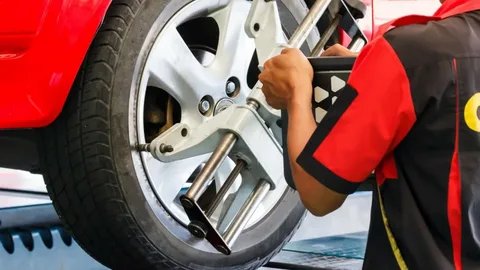In today’s fast-paced world, ensuring the safety and reliability of vehicles on the road is a paramount concern for both authorities and vehicle owners. An automatic vehicle inspection lane (AVIL) is one such innovation that revolutionizes vehicle inspections, making the process faster, safer, and more efficient. These systems, which combine cutting-edge technology with precision engineering, are becoming increasingly essential for maintaining road safety while reducing human errors and improving the overall efficiency of inspections.
What Is an Automatic Vehicle Inspection Lane?
An Automatic Vehicle Inspection Lane (AVIL) is a technologically advanced system designed to conduct comprehensive vehicle inspections without the need for human intervention. The system uses sensors, cameras, and other diagnostic tools to examine a vehicle’s essential components, including the engine, brakes, tires, lights, emissions, and more. The goal of AVIL is to provide real-time, accurate data on a vehicle’s condition, ensuring that only vehicles that meet safety and environmental standards are allowed on the road.
The introduction of AVIL systems has streamlined vehicle inspections by automating processes that were once labor-intensive and time-consuming. With AVIL, vehicles can be inspected at a much faster rate while ensuring that safety protocols are strictly followed.
How Automatic Vehicle Inspection Lanes Work
AVIL systems typically consist of several key components that work together seamlessly to perform thorough inspections. These components include:
Sensors: AVIL systems use various sensors to monitor key vehicle parameters such as tire pressure, braking performance, engine temperature, and alignment. The sensors are strategically placed along the inspection lane to capture accurate data.
Cameras: High-definition cameras are used to capture detailed images of the vehicle’s exterior, undercarriage, and tire conditions. These cameras also help in detecting issues like broken lights or damaged body parts.
Emissions Test Equipment: AVIL systems are equipped with technology to monitor a vehicle’s emissions. This includes tailpipe sensors that detect pollutants and gases released by the engine, helping to ensure that vehicles comply with environmental regulations.
Data Collection and Analysis: Once the vehicle passes through the AVIL, the system collects all the data, analyzes it in real-time, and generates a comprehensive inspection report. This report highlights any issues that need attention, and the vehicle owner is notified instantly.
Automated Gate Systems: The system often includes automated gates that open and close based on inspection outcomes, allowing the vehicle to proceed or stop for further checks.
The Benefits of Automatic Vehicle Inspection Lanes
There are several significant advantages to using automatic vehicle inspection lanes, both for authorities and vehicle owners.
Improved Efficiency
One of the most notable benefits of AVIL systems is their ability to perform inspections much faster than traditional manual processes. Vehicles can be inspected in just a few minutes, minimizing wait times and allowing for more vehicles to be processed in a shorter period. This results in quicker turnover at inspection stations and significantly reduces traffic congestion.
Enhanced Accuracy
Human error is a common issue in traditional vehicle inspections, as inspectors may miss important details or overlook minor defects. AVIL systems eliminate this risk by relying on automated sensors and cameras that provide precise measurements and data. The system is capable of detecting even the smallest issues, ensuring that vehicles are thoroughly inspected.
Cost-Effectiveness
The use of AVIL systems can result in long-term cost savings for both vehicle inspection stations and vehicle owners. Inspection stations can reduce the need for manual labor and can operate more efficiently with fewer resources. Additionally, vehicle owners benefit from faster inspections, reducing the time and money spent on traditional inspection processes.
Increased Safety
By ensuring that vehicles meet safety and environmental standards, AVIL systems help keep unsafe vehicles off the road. The thorough inspection process reduces the likelihood of accidents caused by faulty equipment, malfunctioning brakes, or worn-out tires. Moreover, the system ensures that vehicles meet emissions standards, reducing the overall environmental impact.
Reduced Human Interaction
In the age of social distancing and health concerns, reducing human interaction has become a priority. AVIL systems offer a contactless inspection process, ensuring that both vehicle owners and inspection staff can stay safe while maintaining high inspection standards. This also reduces the risk of spreading illness and contamination.
Better Compliance with Regulations
AVIL systems help authorities maintain strict adherence to traffic safety and environmental regulations. These systems are designed to automatically check for compliance with safety standards such as brake efficiency, tire health, and emissions levels. If a vehicle fails to meet any of these criteria, it is flagged for further inspection or repair.
The Future of Automatic Vehicle Inspection Lanes
As technology continues to evolve, the future of automatic vehicle inspection lanes looks promising. Innovations such as artificial intelligence (AI) and machine learning (ML) are set to further enhance the capabilities of these systems. By integrating AI and ML, AVIL systems can analyze vast amounts of data to identify patterns and predict potential vehicle failures before they happen. This predictive maintenance approach can save both time and money by addressing issues proactively rather than reactively.
Additionally, future AVIL systems may be integrated with smart cities, allowing for real-time data sharing between inspection stations and government authorities. This could further streamline the vehicle inspection process and enhance road safety and environmental monitoring.
Key Factors to Consider When Implementing AVIL Systems
Infrastructure Requirements
To effectively implement an AVIL system, it is crucial to have the right infrastructure in place. This includes proper lane design, sensor placement, and camera installation. The inspection lane should be designed to accommodate all vehicle sizes, and the technology should be tested for accuracy and reliability.
Regulatory Compliance
For AVIL systems to be widely adopted, they must comply with local and international safety and environmental standards. Authorities must ensure that AVIL systems meet regulatory requirements before they can be implemented. Additionally, vehicle owners must be informed about the inspection process and its significance.
Continuous Maintenance and Upgrades
As with any technological system, AVIL systems require regular maintenance and upgrades to ensure optimal performance. This includes calibration of sensors, software updates, and hardware repairs. Regular maintenance helps avoid system malfunctions and ensures that the system remains up-to-date with the latest technological advancements.
Conclusion
In conclusion, automatic vehicle inspection lanes represent a significant leap forward in vehicle inspection technology. By automating the inspection process, these systems offer a range of benefits, including increased efficiency, accuracy, cost-effectiveness, and safety. As technology continues to evolve, AVIL systems will likely become an even more integral part of the vehicle inspection process, ensuring that vehicles on the road meet safety and environmental standards. Embracing this technology will ultimately benefit vehicle owners, inspection stations, and society as a whole.




